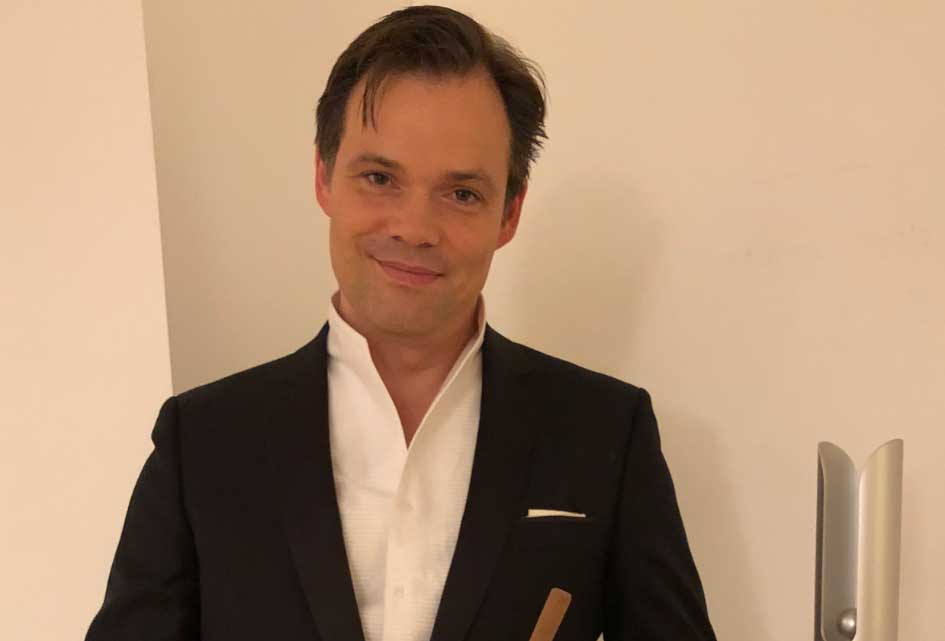
“If you look closely, you can see the influence of art on successful management”
Art and business. Two worlds that seem to be different at first glance, are also similar. What can entrepreneurs and managers learn from art and how can they be inspired by it – this is what Professor Dr. Stephan Frucht, member of the advisory board of the management consultancy Brook Valley, talks about in this interview.
Professor Frucht, you have been combining the worlds of business with art and culture for many years. What can entrepreneurs learn from artists from your point of view?
Stephan Frucht: Top artists and top entrepreneurs have enormous parallels in their character traits. Both are characterised by great pragmatism, great stamina and great openness to new things. And both are just as creative as they are willing to take risks. It is not for nothing that many entrepreneurs are interested in artists, art and culture. And in successful artists there is very often an entrepreneurial element, because they know how to market themselves and their works. Despite all the similarities in their characteristics, artists and entrepreneurs can learn above all the different techniques, structures and processes of the other world.
Give an example of this?
Stephan Frucht: Herbert von Karajan is one such example. The long-time head of the Berlin Philharmonic has such excellent management skills that he could have run any medium-sized company. The Berlin Philharmonic owes him an enormous amount, also financially. Conversely, there are top managers who have more intensive access to the arts than many an artistic director: Michael Otto, Arend Oetker, Werner Bahlsen, Werner Müller, Ernst v. Siemens or Mattias Doepfener – to name but a few. What they all have in common is that they have always learned from the other side and taught it at the same time.
And what is that exactly? What can you learn and teach each other?
Stephan Frucht: Take a perennial topic in business: leadership. Many leaders and managers are not even aware that leadership is a principle that is also applied in art. Think, for example, of an orchestra with its many individual players – and a conductor who has to put it all together into a great whole. A manager who has experienced how a conductor works can practically derive his or her own leadership techniques from this – if he or she looks very closely.
What exactly is transferable from the world of a conductor to a business leader?
Stephan Frucht: Listening. A very important competence – which is apparently still practised far too little. The conductor must master three levels. First, he must hear if something is wrong in the music. That is still quite simple – and can perhaps be equated in the business world with a mistake coming to light. Then he has to hear where this error might come from. And finally, he has to find out why this error is occurring. Who is playing too slowly? Who is playing too low? And the ultimate question: What leads to this? Often, the problem in business does not result from a singular inability, i.e. a lack of professional competence. Rather, something is wrong in the team dynamics. Then the conductor must not only pick up signals, but also send the right ones.
So is the conductor a better controller?
Stephan Frucht: Not really. Music is not just about right or wrong. It’s about creating something special. It’s not enough if everything is technically right in the end, then it’s still not music. The real work begins when you are above the technical. It then makes the difference whether a conductor or manager can still get the indescribable out of the team or only achieves benchmarks. Only the best of the best can usually achieve the extraordinary. Just as Steve Jobs did not just create a phone with the iPhone, the 7th Beethoven with Carlos Kleiber is not just a Beethoven symphony, but a revelation.
Back to the point of recognising a problem: once it is found, it is not necessarily solved. Can artists offer inspiration here too?
Stephan Frucht: Of course – in many different ways. But let’s stay with the conductor once again. As a conductor, I nowadays give workshops again and again in which I give managers an insight into the conductor’s work. There we also deal with exactly your question: How do we react to a problem once we have identified it? In principle, there are at least three different styles of leadership with which you can act. Target-oriented: You give a directive, such as: “Play faster.” Goal-oriented: you define a goal, like: “It has to sound more like staccato.” Innovation-oriented. You name the problem and give a free hand to solve it. Exciting for the conductor: Whatever he has done, he is presented with the result right away in the next performance. This immediate grip on a result can be quite shocking for entrepreneurs and managers. Because in the complex world of business, it often takes much longer for a change in one place to reach another. The important thing is to realise: something is happening. And it’s up to me. That makes some people think.
This direct effect is much rarer in business. What does it take to find the right leadership style even without this direct feedback?
Stephan Frucht: There is no such thing as the right leadership style in the sense of a universal rule – again, this applies to both worlds. But there is the right leadership style at the right time in the right context. Sometimes the limiting, sometimes the opening leadership style and sometimes even a combination of both is the right one. It all depends. To recognise this, leaders need a lot of ability for self-reflection. Art can offer them that too – not only the orchestra, but also many other artistic fields: taking a step back, looking at things from a different angle. That’s what art stands for and that’s what it can give people. Not only people from the business world, by the way, but all people. That’s why art is always the source of innovation.
Art as inspiration for economic innovation. Do you have an example of this for us?
Stephan Frucht: I’ll give you two. You know Pointilism from painting, which experienced its heyday between 1889 and 1910. The idea of artists like Georges Seurat: create a complete picture with many small dots. The principle of additive colour mixing was an inspiration for the tube colour television and finally also modern imaging, which provides a complete picture pixel by pixel. And the CD would also have been unthinkable without art. It contains exactly 74 minutes because Norio Ohga, then vice-president of Sony, wanted Beethoven’s 9th Symphony to fit on it in its entirety in a version by Wilhelm Furtwängler. Furtwängler hated the technical interruptions in recordings. Away from such great examples, entrepreneurs and leaders are always using the arts to inspire them in small and large ways. And some of them have even defined the arts as a central concern. Behind this is often the same causal connection as I mentioned above with the example of conductors: At first, the effect is not immediately visible in the balance sheets. But if you take a closer look, you will realise what contribution art can make to successful management.
Prof. Dr. Stephan Frucht is a member of the advisory board of the Brook Valley consultancy. As a trained musician and conductor, he has made numerous recordings with renowned orchestras. He has been Artistic Director of the Siemens Arts Program since 2015. Previously, as Managing Director at the Federation of German Industries (BDI), he led the Cultural Circle and the Cultural Foundation of German Business. He is an honorary professor at the Karlsruhe University of Music and regularly gives lectures at the European School of Management and Technology (ESMT) and the Harvard Kennedy School. He is also a member of the Board of Trustees of the Karajan Academy of the Berlin Philharmonic, the Friends of the Bayreuth Festival, the Berlin State Opera and the Prussian Cultural Heritage Foundation.
